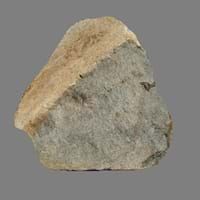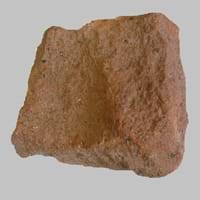Definition
Lamprophyre is uncommon igneous rocks primarily occurring as dikes, lopoliths, laccoliths, stocks and small intrusions
Ignimbrite is a volcanic rock consisting mainly of pumice fragments, formed by the consolidation of material deposited by pyroclastic flows
Origin
Unknown
New Zealand
Discoverer
Unknown
Patrick Marshall
Etymology
From Greek lampros bright and shining + porphureos purple
From Latin ignis fire + imber, imbr- shower of rain, storm cloud + -ite
Class
Igneous Rocks
Igneous Rocks
Sub-Class
Durable Rock, Medium Hardness Rock
Durable Rock, Medium Hardness Rock
Other Categories
Coarse Grained Rock, Fine Grained Rock, Opaque Rock
Fine Grained Rock, Opaque Rock
Texture
Porphyritic
Aphanitic
Color
Black, Bluish - Grey, Brown, Dark Greenish - Grey, Green, Grey
Beige, Black, Brown, Grey, Pink, White
Durability
Durable
Durable
Scratch Resistant
Yes
Yes
Appearance
Dull, Banded and Foilated
Dull, Vesicular and Foilated
Interior Uses
Decorative Aggregates, Interior Decoration
Decorative Aggregates, Floor Tiles, Homes, Interior Decoration
Exterior Uses
As Building Stone, Office Buildings
As Building Stone, Garden Decoration, Office Buildings, Paving Stone
Other Architectural Uses
Curbing
Curbing
Construction Industry
As Dimension Stone, Cement Manufacture, for Road Aggregate, Making natural cement, Manufacture of Magnesium and Dolomite Refractories
Building houses or walls, Construction Aggregate
Medical Industry
Taken as a Supplement for Calcium or Magnesium
Not Yet Used
Antiquity Uses
Artifacts, Monuments, Sculpture
Artifacts, Monuments, Sculpture, Small Figurines
Commercial Uses
An Oil and Gas Reservoir, As a Feed Additive for Livestock, Gemstone, Metallurgical Flux, Production of Lime, Soil Conditioner, Source of Magnesia (MgO)
Cemetery Markers, Commemorative Tablets, Creating Artwork
Types
Minette, Alnoite, Camptonite, Monchiquite, Fourchite, Vogesite, Appinite and Spessartite
Not Available
Features
Always found as volcanic pipes over deep continental crust, Host rock for Diamond, Is one of the oldest rock, Surfaces are often shiny
Always found as volcanic pipes over deep continental crust
Archaeological Significance
Famous Monuments
Data Not Available
Data Not Available
Famous Sculptures
Data Not Available
Data Not Available
Formation
Lamprophyre formation takes place deep beneath the Earth’s surface at around 150 to 450 kilometres, and are erupted rapidly and violently.
Ignimbrites are formed from very poorly sorted mixture of volcanic ash or tuff and pumice lapilli, commonly with scattered lithic fragments.
Mineral Content
Amphibole, Carbonate, Garnet, Micas, Olivine, Phlogopite, Pyroxene
Apatite, Biotite, Calcite, Chlorite, Feldspar, Hematite, Hornblade, Ilmenite, Magnetite, Olivine, Pyroxene, Quartz
Compound Content
Aluminium Oxide, NaCl, CaO, Iron(III) Oxide, FeO, Potassium Oxide, MgO, MnO, Sodium Oxide, Silicon Dioxide, Titanium Dioxide
Ca, NaCl
Types of Metamorphism
Cataclastic Metamorphism, Impact Metamorphism
Burial Metamorphism, Contact Metamorphism, Hydrothermal Metamorphism, Impact Metamorphism, Regional Metamorphism
Types of Weathering
Biological Weathering
Biological Weathering, Chemical Weathering
Types of Erosion
Chemical Erosion, Water Erosion, Wind Erosion
Chemical Erosion, Coastal Erosion
Grain Size
Fine to Coarse Grained
Fine Grained
Fracture
Conchoidal
Uneven
Porosity
Very Less Porous
Highly Porous
Luster
Subvitreous to Dull
Vitreous to Dull
Compressive Strength
Not Available
Cleavage
Conchoidal
Not Available
Toughness
Not Available
Not Available
Specific Gravity
2.86-2.87
2.73
Transparency
Translucent to Opaque
Opaque
Density
2.95-2.96 g/cm3
1-1.8 g/cm3
Specific Heat Capacity
Not Available
Resistance
Heat Resistant, Impact Resistant
Heat Resistant, Impact Resistant, Pressure Resistant, Wear Resistant
Deposits in Eastern Continents
Asia
Russia
Afghanistan, Armenia, Azerbaijan, Burma, Cambodia, China, India, Indonesia, Iran, Japan, Malaysia, Mongolia, Nepal, North Korea, Pakistan, Saudi Arabia, Syria, Taiwan, Thailand, Turkey, Vietnam, Yemen
Africa
Angola, Botswana, Cameroon, Ethiopia, South Africa
Cameroon, Cape Verde, Chad, Djibouti, Eritrea, Ethiopia, Kenya, Libya, Madagascar, Nigeria, Rwanda, South Africa, Sudan, Tanzania, Uganda
Europe
England, Hungary, Iceland, United Kingdom
France, Georgia, Germany, Greece, Iceland, Italy, Netherlands, Poland, Portugal, Spain, United Kingdom
Others
Antarctica, Greenland
Antarctica, Hawaii Islands
Deposits in Western Continents
North America
Canada, Mexico, USA
Canada, Costa Rica, Panama, USA
South America
Argentina, Colombia, Ecuador
Argentina, Bolivia, Brazil, Chile, Colombia, Ecuador
Deposits in Oceania Continent
Australia
New South Wales, New Zealand, Queensland, South Australia, Western Australia
Central Australia, Western Australia










